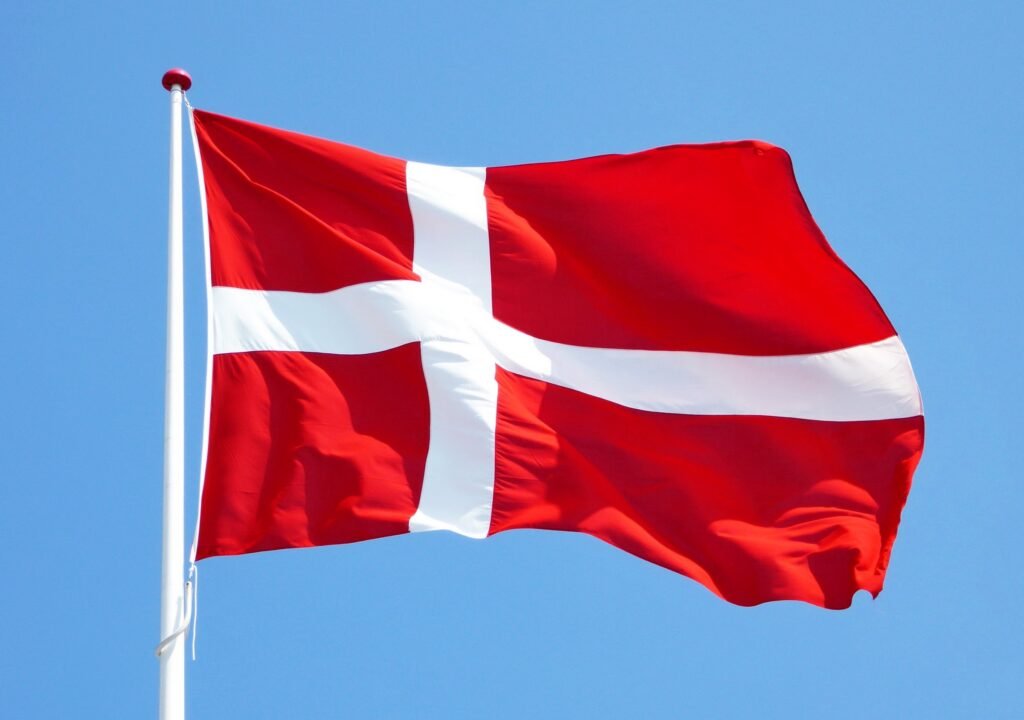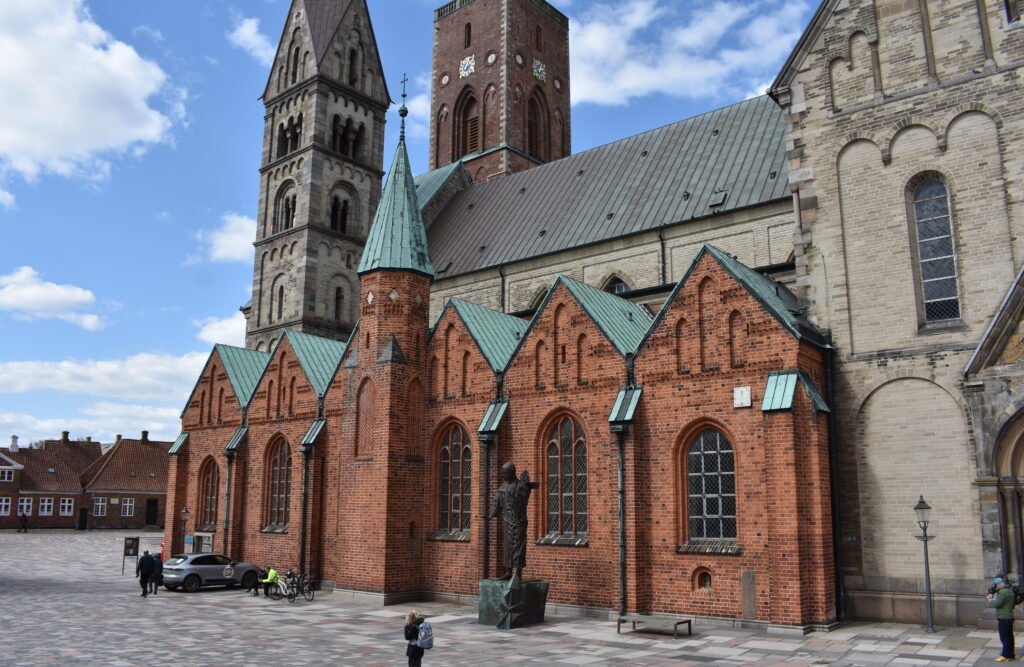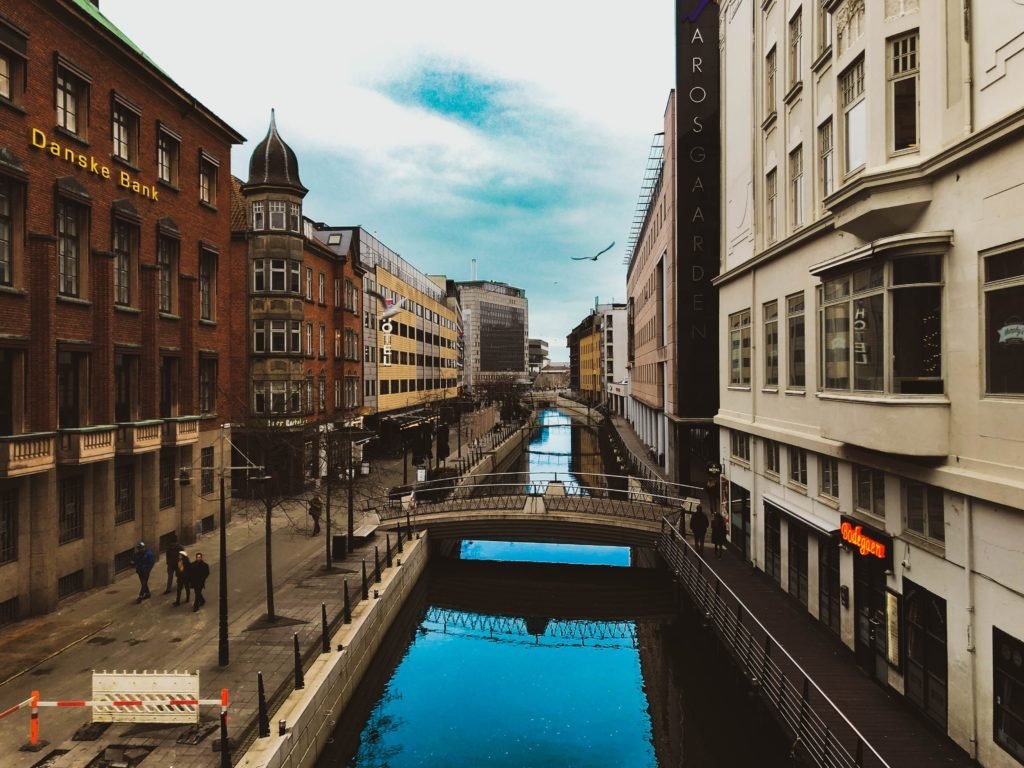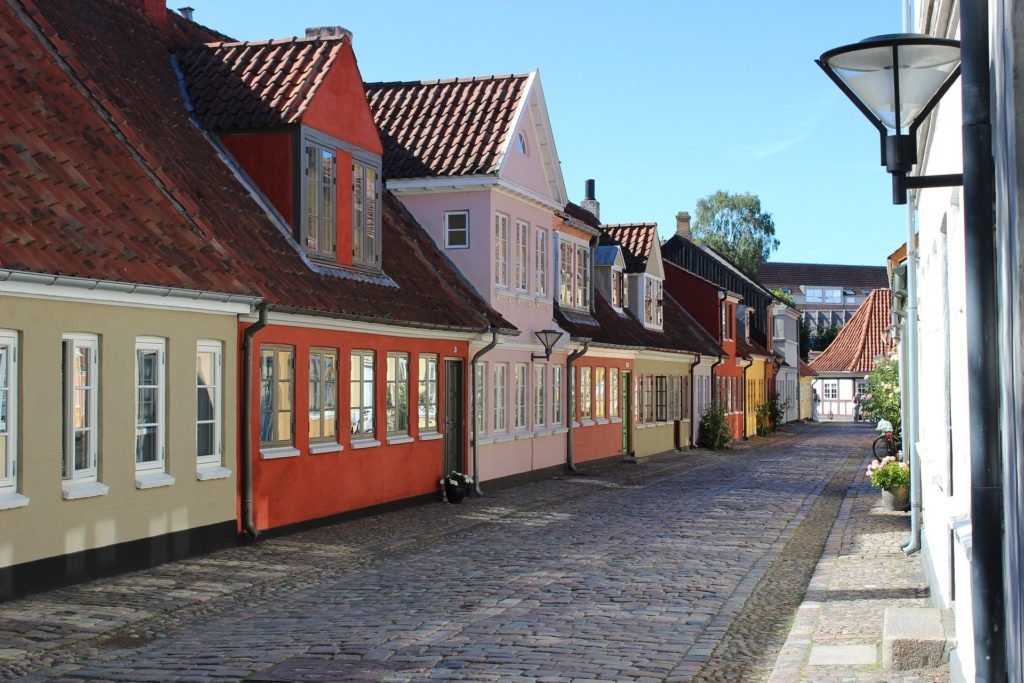
While Denmark’s history doesn’t stretch as far back as other European nations, it is still rich in old cultural places. Some towns date back to the Viking Age. Others blossomed due to the influence of the early Christians. Here are the most historic travel destinations in Denmark.
Contents
Ribe

Ribe is Denmark’s oldest town. It is already very popular among tourists – people regularly come to Ribe to see its Cathedral and its old streets.
It was founded as a market town in the early 700s. At that time, it was a very important location for the Vikings. During the following centuries, Denmark became a Christian country, and Ribe’s first church was constructed sometime in the 9th century. The current cathedral, which is the symbol of the town, was inaugurated in 1250. Ribe continued to grow through the Middle Ages, but in the 1600s it became difficult for ships to reach Ribe. The town of Esbjerg eventually took over as the main market and industrial town of the area, whereas Ribe went into decline. Today it is a very small town with few inhabitants, but it is a thriving tourist destination with hundreds of thousands visiting every year.
The closest airport is Billund, and Ribe has multiple hotels. One of them is Hotel Dagmar, the oldest in Denmark. When you are there, visit the Cathedral, the Viking Museums, and eat at the local restaurants.
Jelling
Jelling is another small Danish town. Located in south-central Jutland, it is the site of the famous Jelling Runic Stones.
The Jelling mounds and stones are listed as a UNESCO World Heritage Site. The large stone was raised by King Harald Bluetooth – it is carved with runic inscriptions, detailing how Denmark became Christian. Aside from the runic language, it has the earliest known portrayal of Jesus in Scandinavia. The small stone was raised by King Gorm the Old as a memoir of his wife Thyra.
These stones are famous in Scandinavia. They used to stand in the open, but now they are protected by a glass casing. Next to them is Jelling Church which dates back to the early 12th century, possibly even earlier. Gorm the Old is believed to have been buried below the current church. Near the stones and the church, you’ll find the burial mounds, also worth seeing.
To reach Jelling, fly to Billund. It is a small town without too many accommodation options, so you should stay in the city Vejle – a beautiful hilly city with better modern infrastructure.
Aarhus

Aarhus feels like a modern city with its many innovations and its massive university, but it is in fact one of Denmark’s oldest cities. It is generally believed to be the second-oldest after Ribe, founded around 750.
For a while, Aarhus was the capital of the country. It is now the largest in Jutland. There are plenty of historic attractions in Aarhus – namely the Cathedral, the Latin Quarter, and the Moesgård Museum.
Aarhus is a great city to stay in while you explore other Danish destinations on day trips. The city is centrally located in Denmark, and you’ll find trains and buses going to just about everywhere in the country.
Odense

Odense took its name after Odin and the city was founded in the Viking Age. It has quite a bit of Christian influence too, and the Cathedral is just as impressive as the one in Aarhus.
It is the largest city on the island Funen and is connected to both Copenhagen and Aarhus by train. Odense has always been one of Denmark’s most important cities, ever since its foundation, and that continues to this day.
The oldest quarter of the city has some fascinating architecture. Four kings are buried in Odense and it is rich in churches and classic attractions. Fairytale author Hans Christian Andersen was born and raised in Odense. When visiting the city, you can see the Andersen Museum and his first house.
Roskilde

Before Copenhagen became the capital, Roskilde was the main city of Denmark. It thrived during the Middle Ages and it is famous for its massive Cathedral – arguably the most impressive one in the country – where most kings and queens are buried.
Roskilde also has Viking Ships and several museums.
Today it only ranks as the 10th largest city in Denmark. It is only a small ride away from Copenhagen, so most tourists decide to visit Roskilde as a day trip while staying in the capital.
Lindholm Høje
Lindholm Høje is an old burial site from the Iron and the Viking Ages. It has over 700 graves and the area is well-preserved because at the end of the Viking Age, the area was covered by sand, and that preserved the graves and the monuments.
Since 1993 there has been an outdoor play at Lindholm Høje every year in June.
It is an interesting site, but you don’t have to spend more than an hour there. Lindholm Høje is located very close to Aalborg, the main city in Northern Denmark. Aalborg is a great city to stay in, as you will have lots of cultural attractions near.
Skagen

Skagen was first mentioned by Pliny the Elder in the first century – not as a town, but simply as a place. The town of Skagen is the northernmost in Denmark, located at the very top of the country. The first actual buildings in Skagen are believed to be from the 13th century. While Skagen has always been known as a fishing town, it was also a market town during the late Middle Ages and during the Renaissance. At one point it was the largest marketplace in Vendsyssel but eventually, Skagen was surpassed by Hjørring.
It was in the 19th century that Skagen became famous. Most of Denmark’s best painters were living here, as they thought the weather conditions and natural beauty of the town were inspirational for their paintings. This group of painters became known as the Skagen Painters and included P.S. Krøyer, Michael and Anna Ancher, Holger Drachmann, and many others. Writers such as H.C. Andersen also came to visit at various points.
Skagen has some fascinating art museums and classic monuments. But nowadays, it is mostly known as a popular summer resort. A lot of domestic travelers come to Skagen in July, but it is also gaining international attraction as of late.
Viborg
Viborg was founded in the 900s but not much is known about the city’s early history. Some historians believe that it was a religious centre for the Vikings since the name Viborg means “the holy place on the hill”.
In any case, we know that Viborg was an important marketplace for the Vikings and that it eventually became a Christian city. Construction of the Cathedral began around 1130 and it remains one of the top attractions to this day. It also has the oldest educational institution in the country that is still in existence – Viborg Cathedral School.
Viborg is very overlooked by tourists so you can easily go there without expecting any big crowds. It is a calm and comfortable city to visit. Viborg is one of the leading places for sports in Denmark with a top handball team and several local events related to other sports. Legendary handball coach Ulrik Wilbek (who has won 1 World Championship, 2 European Championships, and 1 Olympic gold medal as a coach) is the current mayor of Viborg!
Helsingør
Helsingør is yet another old Danish town that makes for a great travel destination. Sometimes known as Elsinore in historical English.
The highlight is Kronborg Castle (a UNESCO World Heritage Site) where you can see old treasures and exhibitions, as well as the famous Holger Danske statue.
Helsingør also has a charming town centre with nice opportunities for shopping and dining. It is located in the northeastern corner of Zealand, not too far from Copenhagen. There are direct trains between Copenhagen and Helsingør at every hour of the day. It has Hotel Marienlyst, one of Denmark’s best hotels.
Copenhagen

Naturally, the capital of Denmark also deserves a spot on the list. But we are saving the best for last.
Copenhagen is not as old as Ribe, Roskilde, or Aarhus, but it has certainly caught up with them when it comes to attractions. It is now by far the most cultural city in Denmark and possibly in all of Scandinavia.
Known as ‘København’ in Danish, it was first mentioned in the 12th century. The founder is believed to be Bishop Absalon who had a huge influence on the development of the city. Absalon was a church father and a political advisor who has several myths and fascinating stories related to him.
Eventually, Copenhagen grew to be the biggest and most important city in Denmark. It has a wide selection of museums that you can visit, it has multiple palaces in the City Centre, and you will also find many entertainment venues such as the Opera House, the Royal Theatre, and the Tivoli Gardens.








